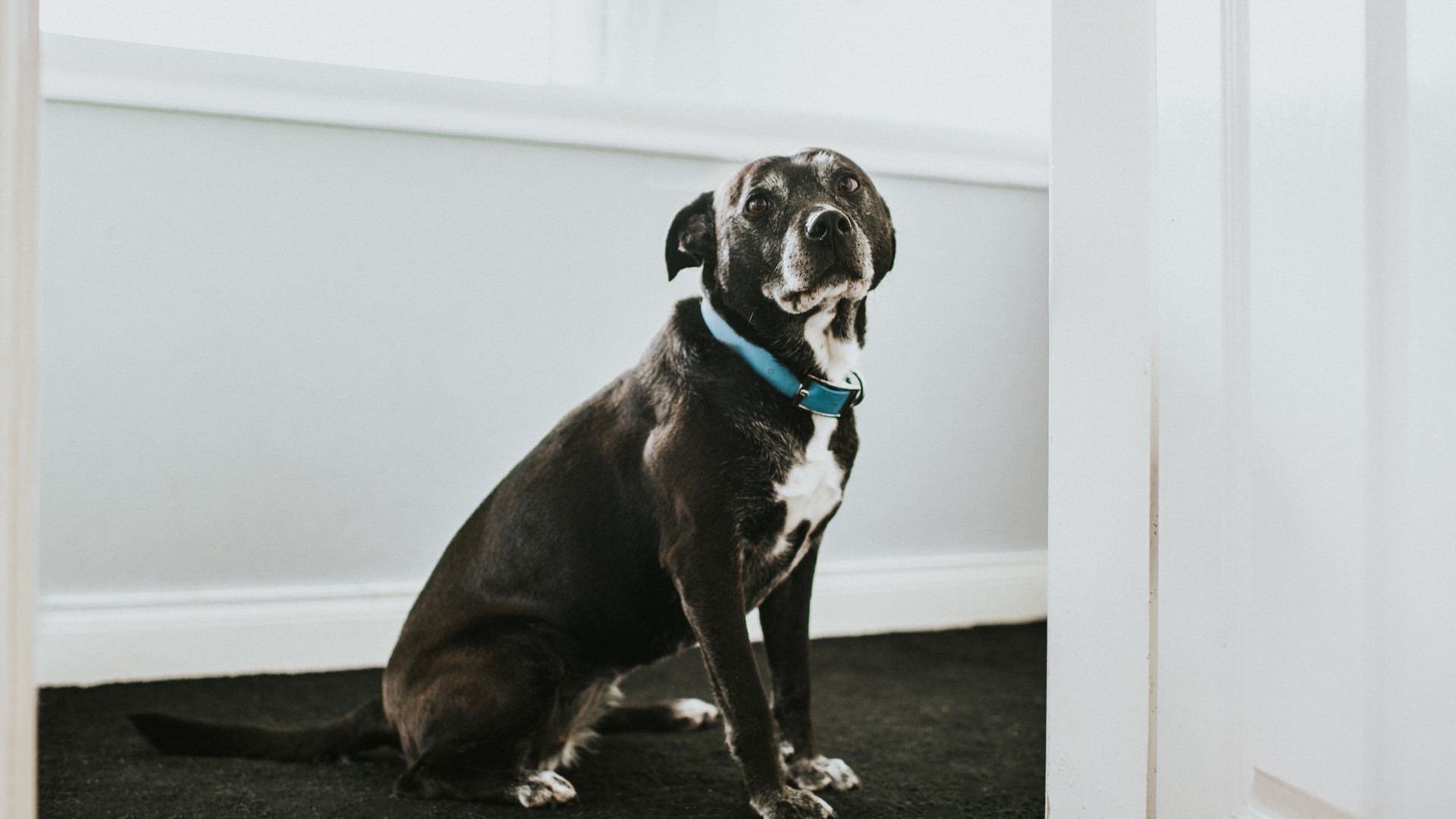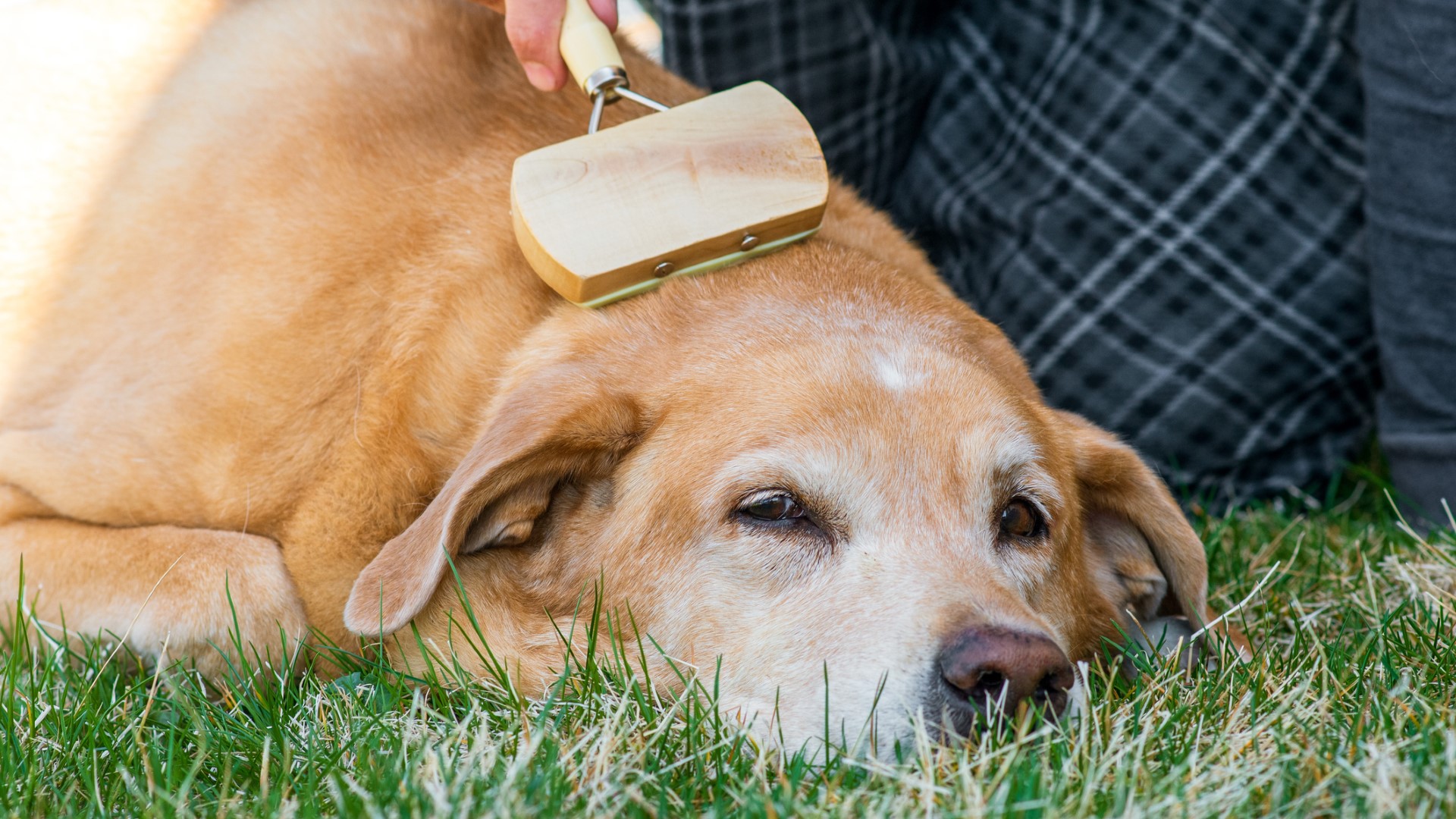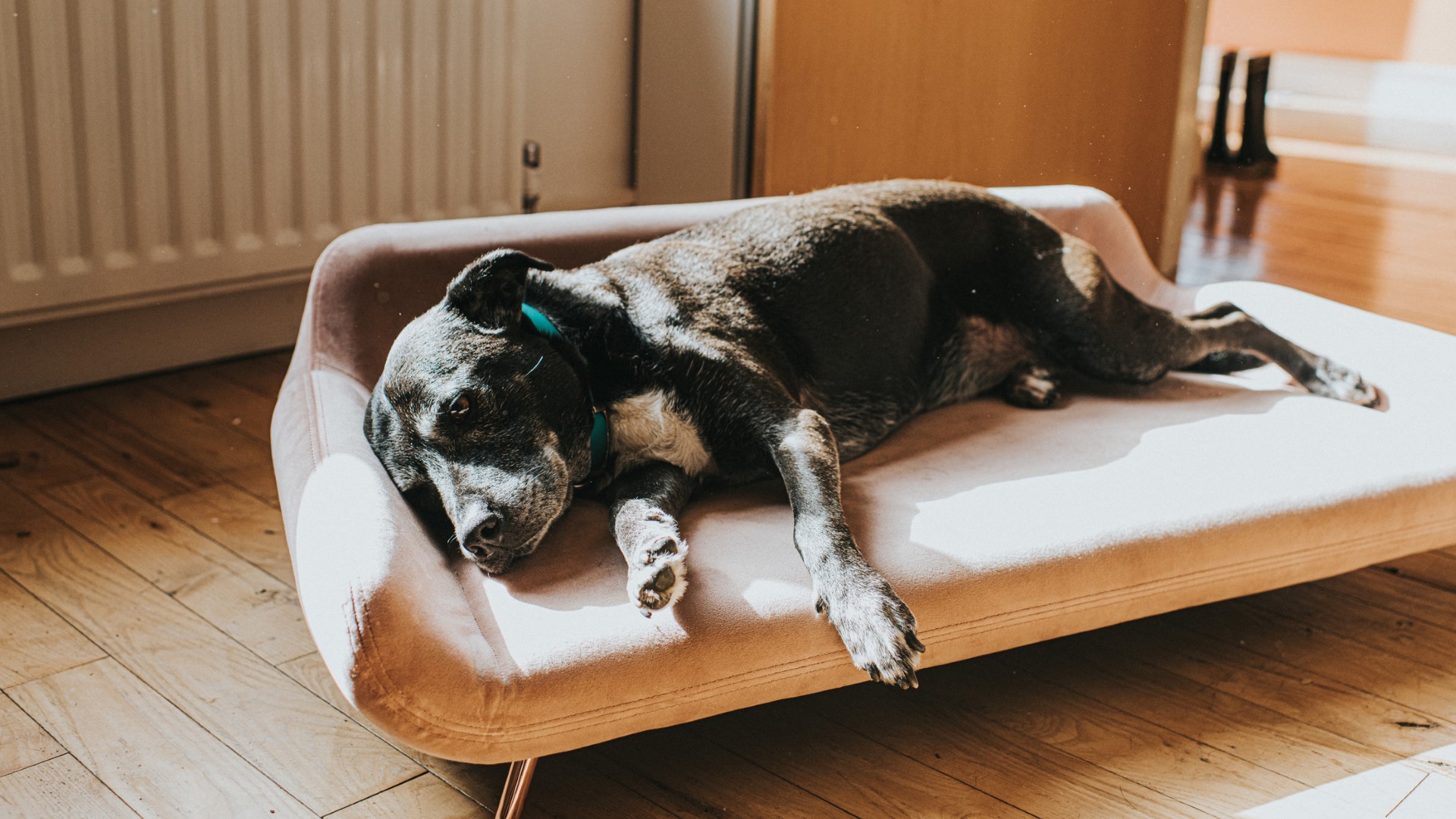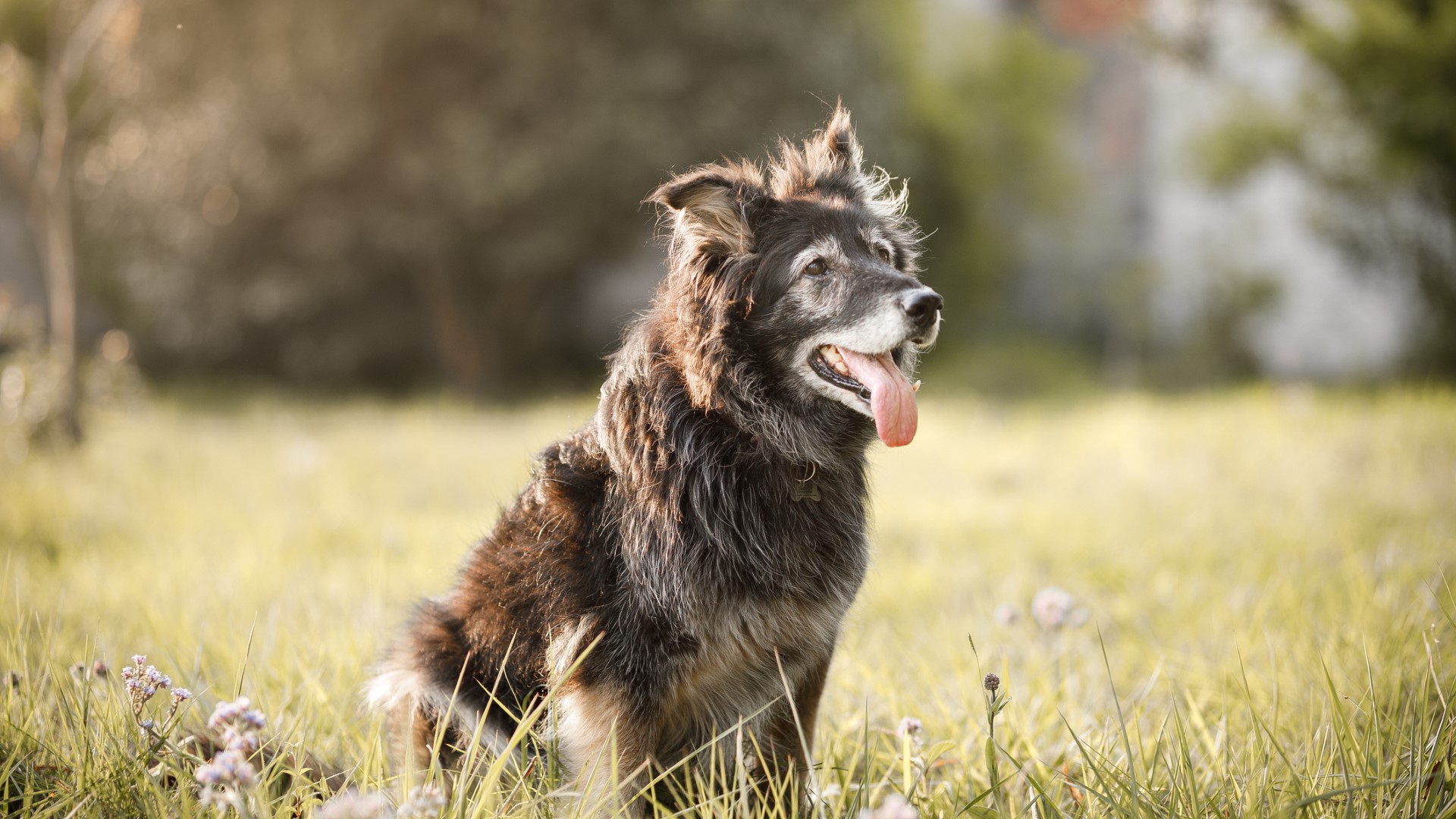32 tips for taking care of senior dogs
Check out these essential tips for taking care of senior dogs.

As our cherished dogs enter their senior years, their health, enrichment, exercise, dietary, and social needs can change. By learning the ins and outs of taking care of senior dogs you can better support your canine bestie throughout their golden years.
Below, we'll delve into practical advice for supporting your senior pooch's emotional, physical, and mental well-being. We've got you covered with the tips you need to ensure their later years are as comfortable, enriching, and enjoyable as possible. From stocking up on the best dog food to entertaining your aging pup with one of the best snuffle mats for dogs, there's plenty you can do to make your canine companion's senior years truly golden.
To get the most out of this guide, it's best to understand at what age your canine companion becomes a senior and this may also answer your question "How long do dogs live?" At what point your dog is considered a senior depends on whether they are a small, medium, large, or giant breed. Small breeds are typically considered seniors once they hit 11 to 12 years old, medium breeds hit their golden years at about nine, large breeds tend to reach senior status at seven to eight years old, and giant breeds become seniors at about the age of six.
Read on to learn more!
32 tips for taking care of senior dogs
1. Make sure their collar and harness fit comfortably

To ensure the comfort and safety of your senior dog, it's important to make sure their collar and harness fit properly. Since they can have more aches and pains and more sensitive skin, an ill-fitted harness or collar can quickly cause discomfort, raw spots on the skin, and even tracheal damage.
In contrast, investing in one of the best dog harnesses that fits well and is comfortable can help support your aging pup on walks and help keep them safely active.
2. Spend quiet time together

As your aging pup slows down, you may need to adjust how you spend time together. If your senior dog can no longer play a high-energy game of fetch in the park, consider sitting quietly together in the park instead to enjoy the fresh air and soak up the sun.
PetsRadar Newsletter
Get the best advice, tips and top tech for your beloved Pets
Once you start adjusting to your senior dog's reduced stamina, you will likely find that you can still spend plenty of quality time with your canine BFF, just in a lower-energy way.
3. Have a pet first aid kit on hand

Investing in a pet first aid kit is always a good idea, and it can especially come in handy for senior dogs with sensitive skin more prone to scrapes and cuts. Having a first aid kit on hand ensures that you can quickly respond to minor injuries and ensure your aging pup's comfort.
You can stock the kit with roller gauze, self-adhesive medical wrap, scissors, wound dressings, micropore tape, scissors, eye wash, tweezers, and antiseptic wipes or saline syringes for flushing wounds.
4. Use extra patience

Remember to use extra patience with your senior dog pal as they may take a bit longer to respond to your cues or move from one spot to the next. Hearing and vision loss, cognitive decline, joint pain, mobility limitations, and a decrease in energy may affect your aging dog's processing, enthusiasm, and ability to engage with you. Moving at your senior pup's speed and comfort level can greatly increase their quality of life and maintain your bond throughout their golden years.
5. Provide a balanced diet

Senior dogs can be prone to obesity, so it's important to provide a balanced diet that supports a healthy weight. Senior-formulated dog food typically is less calorie-dense and can be a good option for aging dogs with hypothyroidism or individuals who have slowed down and are prone to quickly gaining weight. These diets should also consist of high-quality protein.
According to the Cornell Richard P. Riney Canine Health Center, aging dogs often decrease how much protein they synthesize on their own, which increases the need for higher protein in their diet.
6. Schedule routine vet checks

Once your dog reaches their senior years, it's a good idea to set them up with vet checks at least every six months. Since senior dogs can face a higher risk of developing some conditions it's important to be proactive with their care. Preventative care, screenings, routine blood work, and early detection of health issues can increase your aging dog's longevity and quality of life.
7. Checks for lumps and bumps

Some senior dogs, depending on their breed, face an increased risk of developing certain cancers. As they age, it's important to routinely check them for lumps and bumps which may be a sign of tumors.
Not all tumors are cancerous, and it's also common for older dogs to develop non-cancerous, fatty tumors (lipoma). Lumps that are especially of concern tend to appear suddenly and grow quickly, are hard or firm, can easily bleed or produce discharge, may be textured, and can become black or purple. If you find any lumps of concern on your senior dog, set up an appointment with your vet.
8. Groom them regularly

Grooming your senior dog regularly can benefit their overall health and allows you to identify changes in the health of their coat, skin, nails, ears, and eyes. In addition to regularly brushing them with the best dog brushes to maintain their coat health, you'll want to clear their ears and the area around their eyes and keep their nails trimmed. Since older dogs can become less active, they may not wear down their nails as much and can suffer from pain and gait changes if their nails become overgrown.
9. Monitor for vision and hearing loss

As your dog reaches an advanced age, their hearing and vision might deteriorate due to a range of age-related conditions.
Signs of hearing loss in a senior dog can include seemingly ignoring cues they would normally respond to, becoming startled when you approach them from behind, sleeping heavily, not responding to exciting sounds, and head tilting.
Signs of vision loss can include bumping into objects, difficulty navigating at night, clouding of the eyes, confusion, pawing at the face, and difficulty locating food, water, or toys.
If you notice any of these signs, it's important to have your senior pup checked by a vet.
10. Establish a routine

Establishing a routine can help your aging dog feel safer and more comfortable as they navigate their golden years. A routine can be especially helpful for seniors who are struggling with anxiety or cognitive decline. Daily events you can incorporate into a routine include feeding, meds and supplements, exercise, outside time, enrichment, naps, and getting ready for bed.
11. Consider supplements

Supplements may help your senior dog with their mobility, mood, skin and coat, and digestive health. Since many aging pups have arthritic changes, some of the best joint supplements for dogs contain glucosamine and chondroitin and are a popular choice. If you're interested in starting your pup on supplements, it's a good idea to consult with your vet and develop a plan together.
12. Maintain a comfortable temperature

Aging dogs sometimes have a difficult time effectively regulating their internal temperature. They may struggle more than younger dogs to stay warm in the winter or cool enough in the summer. It's important to take extra precautions with your aging pal and make sure you can help them maintain a comfortable temperature throughout the year.
13. Brush their teeth regularly

Dental disease can cause serious issues in senior dogs. Brushing their teeth at least three times per week will help prevent the buildup of tartar and remove plaque. Keeping their teeth and gums healthy can prevent or reduce the risk of periodontal disease, gingivitis, jaw bone infection, tooth root abscesses, and chronic kidney disease.
14. Be kind to yourself

When you're trying to meet all the needs of your pooch, it can sometimes feel overwhelming. Making sure your dog has the right food, exercise routine and even dog bed, is a lot and can weigh on your mind. Just remember, you are doing a great job and your hound loves you!
15. Encourage gentle exercise

While your senior dog may slow down, it's still important to support their joints, flexibility, heart health, and muscle mass with gentle daily exercise. It's important to not encourage exercise that causes them pain or exacerbates health conditions, but instead to do activities within their comfort zone. This may look like short sessions of light swimming or walking on soft, but supportive ground. Your vet can help you develop an appropriate exercise plan for your aging pup.
16. Make sure they get enough rest

As dogs enter an advanced age, it's normal for them to begin sleeping longer than when they were young adults or middle-aged. Many senior pups will snooze for 18 to 20 hours per day. Getting restorative and restful sleep is crucial for old dogs to maintain their health and mental well-being. You can support their need for increased sleep by making sure they have multiple accessible and comfortable places to rest around their home.
17. Watch for signs of cognitive decline

Some aging dogs may show signs of cognitive decline due to canine cognitive dysfunction syndrome (CCDS). Senior dogs may develop CCDS due to the build-up of a protein called beta-amyloid, which is a neurotoxin. Signs that your aging pup may be struggling with cognitive decline include disorientation, sudden behavioral changes, disoriented wandering at night, reversal of house training, restlessness or depression, anxiety, no longer responding to known cues, and struggling to learn new ones.
According to the Cornell University College of Veterinary Medicine, environmental enrichment, diet, and medical treatments can increase the quality of life for senior dogs with CCDS.
18. Consider mobility devices

Mobility devices like dog wheelchairs, lift harnesses, slings, leg braces, strollers, and boots can assist senior dogs with degenerative joint, muscle, and bone diseases.
Some breeds, like the German Shepherd, Chesapeake Bay Retriever, and boxer face an increased risk of developing progressive spinal cord disease, and degenerative myelopathy (DM), which can lead to paralysis or extreme weakness of their hind legs. For aging dogs with DM and other mobility conditions, mobility devices can greatly improve their quality of life.
19. Keep their coat and skin healthy

Because senior dogs can have less effective immune systems, they can be prone to developing skin infections. Keeping their coat and skin healthy can reduce the chances of infection, increase their comfort, and improve their overall well-being. Routine grooming, the addition of supplements, and adding omega-3 fatty acids into your senior dog's diet can help keep their skin healthy and their coat shiny as they age.
20. Consider elevating their bowls

Senior dogs, specifically those who don't face an increased risk of bloat due to having a deep chest, may benefit from eating and drinking out of elevated bowls. By positioning food and water bowls slightly lower than their lower chest, you can support aging dogs with arthritis and neck pain in eating and drinking more comfortably. If your aging pup is arthritic but also a deep-chested breed, such as Weimaraners, it's best to consult first with your vet before elevating their bowls.
21. Keep them hydrated

It's crucial for senior dogs to stay hydrated. Proper organ functioning, digestion, body temperature regulation, electrolyte balance, toxin and waste removal, and joint health depend on adequate hydration.
Keeping multiple bowls of easily accessible water around your home can help ensure your aging canine BFF gets enough water intake. Incorporating some of the best wet dog food in their diet can also help. It's also important to note that excessive water drinking may be a sign of kidney, liver, or digestive issues and should be checked on by your vet.
22. Continue providing enrichment

While your old pal may not be as enthusiastic in their play as they were in their younger years it's still important to provide them with enrichment opportunities to support their physical, mental, and emotional well-being. Snuffle mats, kongs filled with peanut butter, soft chew toys, and some of the best dog puzzle toys can keep your senior dog feeling happy and their mind engaged.
23. Consider physical therapy

If your aging dog is moving slower and appears to be in pain from normal activities, you may want to consider setting them up with physical therapy in addition to medical treatments. Dog physical therapy can include swimming (hydrotherapy), targeted massages, range of motion exercises, stretching, and balance and coordination activities to improve their comfort, mobility, and overall quality of life.
24. Invest in pet insurance

Since aging pups can face an increased risk of certain illnesses and injuries, setting them up with some of the best pet insurance can help protect them when the unexpected occurs and set your mind at ease. Broad coverage plans may also be able to cover annual or bi-annual exams for your senior pooch. While pre-existing conditions likely won't be covered, having your old pal protected with health insurance can make consistent vet care more accessible as new health issues arise.
25. Massage to relieve joint and muscle pain

Old dogs can benefit from massage therapy that eases their joint and muscle pain and increases their ability to move more comfortably. You can learn some targeted massages to help your pooch or enlist the support of a professional canine massage therapist. Massage can work well in conjunction with physical therapy and medical treatments for age-related discomfort and decreased mobility.
26. Watch for behavioral changes

Sudden behavioral changes in senior dogs are often a sign of underlying medical conditions and should be quickly addressed with a vet. Monitor for signs such as your pup suddenly becoming lethargic, uninterested in their favorite activities or meals, defensive or averse to touch, or anxious and restless. Make a note of when the behavior change started and if there is a pattern such as becoming anxious and disoriented at night.
27. Reduce slippery flooring

For large-breed seniors especially, slippery flooring can exacerbate arthritis and other mobility issues. Slippery flooring can also make standing up and sitting down more difficult for aging dogs. To create a safer and more comfortable environment for your pooch, consider installing rugs, carpeting stairs, and laying down mats, especially around their preferred resting places and paths of travel.
28. Interact with them on their level

Some old dogs can have difficulty standing up without discomfort. If your aging pup has joint pain and is lying down, try to interact with them on their level so they don't need to repeatedly stand up to bond with you. While keeping active can help maintain or improve their mobility, you'll still want to spend some quality time where they're most comfortable, such as lying on their dog bed.
29. Give them plenty of love

As your dog enters their golden years, it's crucial to maintain your bond and continue spending quality time together. Providing lots of love will help them feel comforted and secure as they navigate old age. Snuggling up on the couch, car rides through the countryside, and gently playing with some of the best dog toys are just a few of the activities you and your old pal may enjoy together.
30. Make their living spaces accessible

If your older pup is having a hard time getting around, it's a good idea to adjust their living space to be more accessible and safe. Keeping floors free of clutter, using ramps, pet-friendly carpeted steps, non-slip flooring, orthopedic beds, and baby gates to block off unsafe areas, leveling surfaces in your yard, installing nightlights, and investing in portable ramps and lifts for vehicles can help your senior dog more easily and safely navigate their environment.
31. Invest in a supportive dog bed

A supportive and comfortable dog bed can make a world of difference for an aging pup. Investing in a few dog beds to place around your home can ensure that your senior pooch has several options for comfortable resting. The best orthopedic dog bed can support their joints and make getting off the bed an easier task.
32. Spend time outdoors

If your aging pup has always loved spending time outside, it's best to maintain their access to the great outdoors. You may need to supervise them more carefully to ensure they don't accidentally injure themselves, but many old dogs love a good sun basking and nap in the fresh air. Sitting together at the park, taking a nap in your backyard, light swimming, and gentle walks on soft but supportive ground are great outdoor activities to do together.
Cammi is a freelance writer with over 5 years of experience specializing in creating accessible and engaging pet, wildlife, and mycology content. She’s passionate about sharing accurate, ethical, and animal welfare-centered writing that fosters understanding, curiosity, and compassion for our pets and the natural world. She lives off-grid in a self-built cabin with a rambunctious pack of rescue and foster dogs. In her spare time, Cammi enjoys volunteering with animal shelters, foraging for mushrooms, playing viola and guitar, and traveling.
